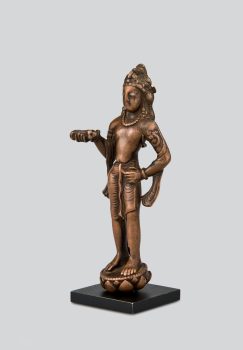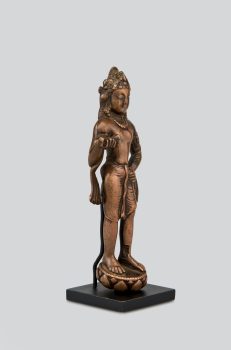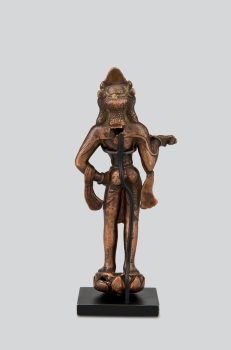Swat region
7th century




Swat region
7th century




Bodhisattva Vajrapani personifies Buddhism’s great power. That energy is apparent in the tool he holds in his right hand by which he activates the Buddhist teachings. Vajrapani is, literally, the Holder of the Vajra, the thunderbolt scepter that is the symbol of tantric Buddhism’s lightning-fast, powerful techniques for attaining enlightenment.
A religious movement that originated in India around the fifth to seventh century with sacred writings and esoteric teachings and practices transmitted from teacher to student through initiation. These remain an important part of Hinduism and Buddhism today.
A kind of energy that can be used, individually and collectively, to effect change.
Buddhist practitioners in some traditions believe that cutting through ordinary perceptions that keep us in the endless cycle of death and rebirth, known as samsara, can create a powerful and enhanced divine identity that leads to enlightenment.
Beings who aspire to become fully awakened like the Buddha and are dedicated to helping others on the path to enlightenment.
From the 8th to 13th century, Kashmir was a renowned center of Buddhist learning, arts, and culture. This fertile valley was a major source of artistic production for the western Himalayan kingdoms, which spanned parts of northern India and the Ngari region of western Tibet.
Get the latest news and stories from the Rubin, plus occasional information on how to support our work.